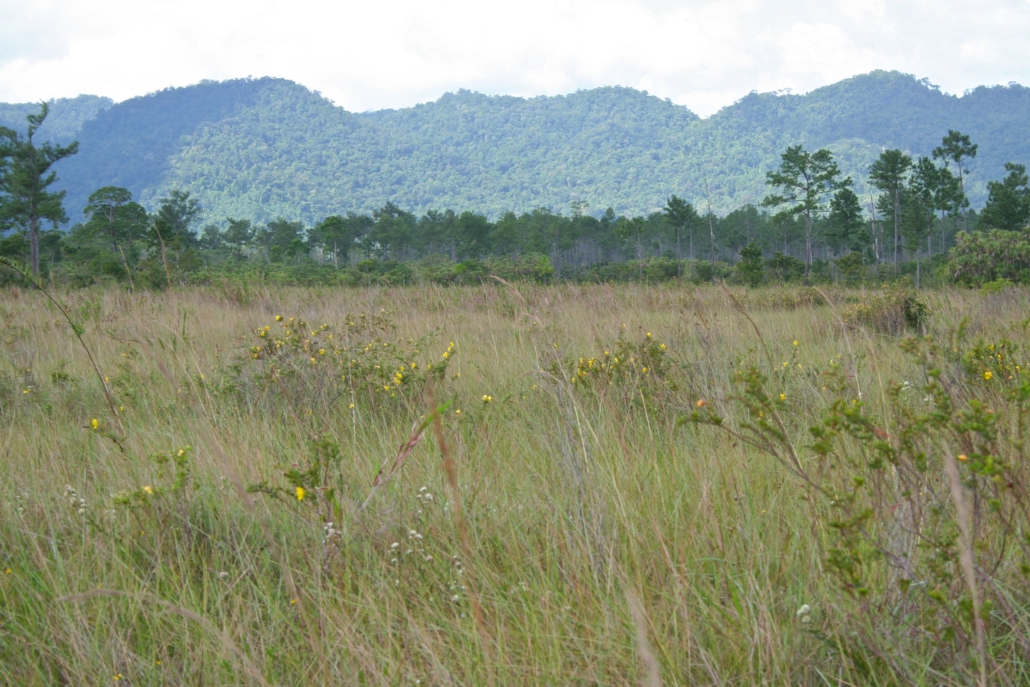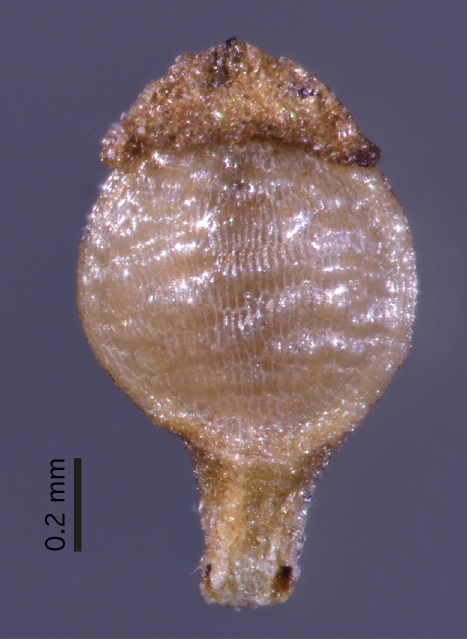BFREE Support Leads to Discovery of New Sedge Species
Robert Naczi, Curator of North American Botany, New York Botanical Garden

On the morning of 7 January 2008, my students from Delaware State University and I hiked from BFREE to the savanna in Deep River Forest Reserve. Our goal was to establish plots and identify all sedges within these plots in order to test hypotheses about the effects of disturbance upon the savanna’s most diverse floral elements, members of the Sedge Family (Cyperaceae). Sedges are grass-like plants that dominate many habitats (including savannas), provide food and shelter for wildlife, and furnish nutritious forage for cattle. Previous research had revealed great numbers of sedge species in the savannas of Deep River Forest Reserve, an extensive protected area bordering BFREE’s southern edge.
Because many sedge species inhabit the Deep River savanna and they usually grow intermingled, our work was demanding, and time passed quickly. Soon, we realized it was time to make the 2-mile hike back to BFREE for lunch. However, as I rose from our last plot, I noticed in the distance a habitat that was unfamiliar. A scan with binoculars revealed a shallow, gently sloping depression dominated by grassy plants. Typical-looking savanna with scattered pines and shrubs surrounded the vegetationaly distinct depression. I was intrigued, had the students look through the binoculars, and asked if they wanted to take a few minutes to explore the place. They enthusiastically agreed.

Photo: R. Naczi
Shortly, we arrived. Exuberant at the prospect of exploring a new spot, the students bounded into the habitat. In a moment we were immersed in a place unlike any we’d seen in Belize. It was magical! Tall grasses grew very densely there, and some towered over us. Although the ground was wet and standing water was present in a few places, we did not sink far into the soil as we walked through the place. Soon, I found a narrow trail crowded with tapir tracks. Best of all, sedges were abundant. In fact, the most abundant sedge was one that I didn’t recognize. Discovering an unexpected sedge added to the excitement of exploring an unexpected habitat.
Study of plant specimens at New York Botanical Garden, Missouri Botanical Garden, and U.S. National Herbarium at the Smithsonian Institution lead to no matches for the unknown sedge. My systematist colleagues did not recognize it, either. On a later field trip, I discovered a second, but much smaller population of the unknown sedge on Mountain Pine Ridge, Cayo District. Analysis of DNA sequences indicated the unknown sedge was unique. We concluded it was an undescribed species, and recently published the name Rhynchospora belizensis for this new species in the online edition of the botanical journal Brittonia. Hard-copy publication is scheduled for the March 2020 issue of Brittonia.
Belizean Beaksedge appears to be a very rare species that grows only in Belize. Fewer than 500 plants are known from the two small populations. Fortunately both occur in protected areas. Nevertheless, it is of conservation concern, ranked Vulnerable according to criteria of the International Union for Conservation of Nature. Belizean Beaksedge is also biogeographically significant because it is the only one of a group of closely related species that occurs in Central America; the rest grow in South America.
BFREE played a key role in the discovery of Belizean Beaksedge. Proximity of BFREE to the study site allowed for extensive exploration and ultimate discovery of the small population within the savanna—a true “needle in a haystack.” Help from BFREE staff was critical, too. Jacob Marlin showed me the Deep River savanna and suggested I study its sedges. All of the BFREE staff have been very supportive and provided much help along the way. The kitchen crew even held lunch for us the day of discovery, though we showed up quite late (and hungry). I am most grateful to the entire BFREE community for their support. I am also grateful to the intrepid students who accompanied me in discovering the new species.
Belizean Beaksedge is the second new sedge species discovered and described from savannas in the Deep River Forest Reserve adjacent to BFREE. In December 2012, colleagues and I published Rhynchospora marliniana, Marlins’ Beaksedge, from this savanna. We named this species for the Marlin Family to honor their steadfast dedication to biological conservation.




Leave a Reply
Want to join the discussion?Feel free to contribute!